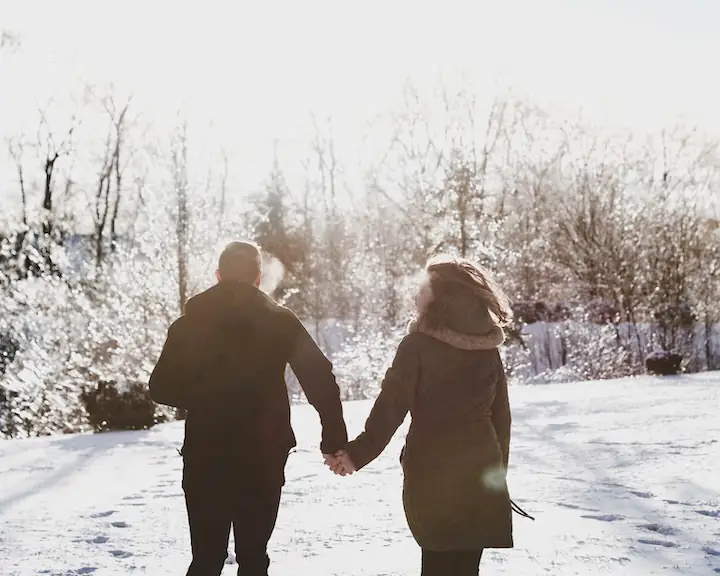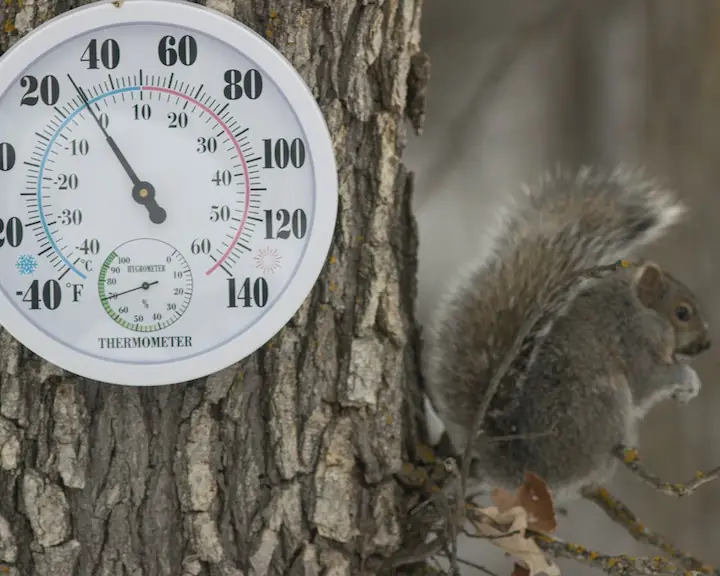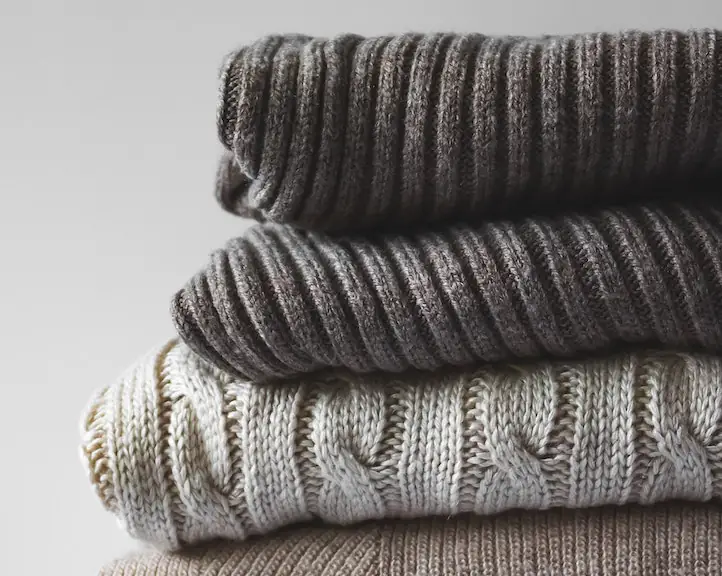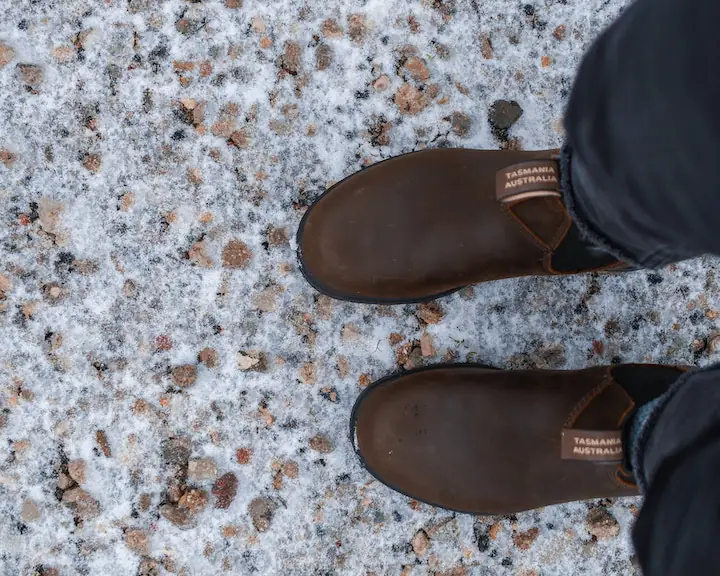Ongoing Free* Things...
LifeStyle
Here are free* recurring...
LifeStyle

Photo Credit @karaeadscreates
*Disclaimer* the below is based on our own personal experience.
*For accurate results, we encourage you to make your own research.*
Our first winter in Canada, on one of those rare days when the sun was out shining its brightest, we decided we didn't need to put on lots of layers.
Boy were we wrong!
You see, coming from a warm country that doesn't get much snowfall, let alone go under 0 degrees Celsius, anytime we see sun, we associate it with warmth.
That bright sun shiny day, we woke up to go to work, saw the sun through the window, and thought to ourselves, “We'll just put on a T-shirt, shorts and jacket cause there's still some snow on the ground.”
On our 5 minute walk to the bus stop we looked at each other and immediately knew we weren't going to make it through the day.
In a split of a second, we ended up running back to the house and donning more clothes (jeans and more T-shirts, specifically).
We then understood why the majority of people watch the weather forecast for any winter storm warnings before planning their day and outfit.
Canadian weather = biting cold = feeling miserable and limited
That day, after work, we bought more T-shirts and thought, we'd layer up on them to feel warmer.
We bought sweaters and many different kinds of jackets over the years many of which didn't measure up in providing adequate warmth.
It felt like we were running around in circles and really wanted to participate in many social gatherings, however, it was way too cold to do anything outside.
We thought about escaping winters all together - move some place warm.
We wondered how others tolerated such cold and concluded on the possibility that they were putting on a brave face.
Active by nature, being cooped up during Canadian winters was way too much to bear.
Canadian friends of ours would ask us to go skating, snowboarding, skiing, and do other outdoor activities.
We thought to ourselves, “While all of those sound very enticing…”
“…how do you do it?”
“…are you for real?”
“…do you not feel how cold it is outside?”
“…as beautiful as snow is to look at, that's all it's for - looking at.”
“…how do you stay warm?”
“…why would you want to subject yourself to suffering such cold conditions and then call it fun?”

Photo Credit: Gary Fultz
Much to our surprise, in Canada, temperatures can plummet to -40 degrees Celsius and even lower still in some areas.
With this new information, understanding how to stay warm was a matter of survival.
Either that or make mad dashes outside from building to public transport and back.
During the pandemic, when all we could do was stay home, we benefitted from the warmth of staying indoors, but as many of us experienced, only being allowed to stay inside got tiring fast.
So, we decided to do a little research on how to navigate Canadian winters to be able to spend some quality time outdoors.
Turns out, the following three categories are crucial to follow when clothing oneself:
1. Base layers (layer closest to skin + layer on top)
2. Outer layers (layers that make up the jacket)
3. Essential Accessories to Protect Extremities: Hats, Mittens / Gloves, Scarves & Boots
Continue reading the full article to get the entire idea on how to stay warm in winter.
By understanding the features of each category, you might be able to build a better wardrobe by making small adjustments over time swapping out current layers with newer ones or making additions.

Photo Credit @izgubljenausvemiru
To be fair, we were layering, we just got the type of fabric wrong.
All clothing from our warm coutnry is made out of cotton.
Having this as a point of reference, we bought many articles of clothing made out of this fabric.
Much to our dismay, the increase in cotton layers didn't magically make it better.
According to outdoor and sporting goods blogs, cotton actually absorbs and redistributes moisture, hence the pervasive cold feeling while wearing cotton clothing during the winter.
We were essentially wrapping ourselves in a icicle fabric sheets expecting to warm up somehow.
Now we know why we were so cold all the time.
We needed fabric that wouldn't redistribute the moisture but rather remove it.
Here are the best moisture-wicking fabrics for base layers:
Polyester
Polyester is breathable and stretchy, has a soft feel, and doesn't absorb much moisture making it quick drying - an excellent contender as opposed to its cotton counterpart.
Although it is synthetic there are many recycled products that are durable and therefore sustainable for the environment.
Wool
Similar to its synthetic fellow fabric, Merino wool is breathable and wicks away moisture.
Where it differs:
Merino wool locks moisture in the fibres and does not redistribute it, which leads to its drawback - long drying times.
Depending on how the material is processed, it can be itchy.
It's also less durable than polyester but it is natural and naturally antimicrobial resulting in little to less odours.
If yout're not going to be washing your clothes for a few days, for example, while hiking, Merino wool might be a possible solution for you.
Despite the fact that polyester is synthetic, we opted to go with this fabric for its durability and sustainability.
We wear one thin base layer and a polyester fleece layer on top.
You can, of course, choose wool, polyester, or a blend of the two.
There are some nice zip up models that not only have all of the benefits stated above but they also can be pretty much dressed up or down (obviously not for super formal occasions - there are some nice sweaters that could be good for certain formal wear).
On top of these two layers, we have a couple of more layers that make up our ultimate winter jacket for men, women and really anyone.

Photo Credit @maxkuuk
After a lot of trial and error, we finally found our winner jacket for Canadian winters.
But first, let's explore the evolution of how we got to our ideal winter jacket.
At first, just like with our base layers, we thought that the material for the jacket had to be cotton but a really thick jacket type of cotton.
Since, we've now debunked that cotton is not the answer to winter warmth earlier on in this article, we'll go over some of the more amusing experiments we tried so you don't have to.
We tried using a windbreaker as one of the top outer layers because it can get quite windy, here.
Seriously, the wind, here, cuts like a knife.
Sure, it's cold, here, but add the windshield and you'll feel your eyes tear up and freeze to the sides of your face.
That cold.
Although this temporarily solved one of the cold factors that make up Canadian winters, the windbreaker did not hold up well in the snow.
In fact, it would let all of the water seep into the inside layers which would make us end up back at square one.
So, we tried using rain-jackets.
At this point, we were desperate.
We were so cold, tired at all of the energy we were using to keep ourselves warm, and tired of being cold, we just wanted it solved.
Sound familiar?
Unfortunately, the rain-jackets were also a flop.
Not only did this not work - sure, the jacket didn't let any air or snow in, it did trap heat and allowed for moisture buildup, though.
We also ended up looking a little ridiculous.
Imagine wearing a bright shinny yellow coloured rain-jacket in the middle of everyone wearing dark colours in the winter.
Talk about wrong season to be sticking out like a sore thumb.
Embarrassed but inspired by what others were wearing, we invested in down parkas.
For the longest time, we thought we had found the best winter jacket, made of down but the truth is we never felt adequately warm in one.
Plus, there was always the issue of regulating our body temperature whenever we would transition from outdoors to indoors and vice versa.
We would get too hot, whenever we would go shopping and need to remove the jacket, then because we were too hot, we would then be too cold, when we later on went outside.
The drastic change in temperature would especially be noted during the change of the seasons.
Although the outer material of the down parka was water repellant, it wasn't waterproof for those fall to winter or winter to spring days.
Our jackets would be soaking wet and quite heavy if we were ever caught in sleet weather.
This lead to the difficulty in maintaining the down parkas because they're dry-clean only.

Photo Credit: Pereanu Sebastian
We were losing hope and about to give up.
We almost started to accept our cold fate by starting to think, “Maybe it's a given.”
“We are in Canada.”
“It's cold for a good chunk of the year.”
“While clothing and spending less time outdoors protects us from below zero celsius temperatures, maybe we're supposed to be a little cold.”
“After all, it is winter.”
The pandemic hit and we were relieved at the thought of being able to avoid winter.
However, as the saying goes, “The grass is always greener on the other side.”
Going stir crazy, gave us a thirst of the outdoors which got us reading many outdoor and sporting goods blogs.
Thankfully, this research actually proved to be most helpful and provided us with the solution we were looking for all along.
Versatile and adaptable jackets designed for most weather conditions (rain, snow, wind, and cold temperatures) and activity levels.
It started to become apparent.
The quote by Alfred Wainwright, which is also very commonly used in Scandinavian countries,
couldn't be more true.
In spite of the definition of a proper jacket evolving for us over the past decade, as we constantly strive for better, our jackets now
The jackets are versatile and adaptable to various weather conditions, such as, rain, snow, wind, and cold.
They are warm, dry, and consistent at all times.
They're durable and sustainable.
There are no animal products that we know of in the layers that make up our jackets (but you are free to choose the layers that work for you).
They're compact.
- Big puffer jackets bring a Michelin Man or person wrapped in a duvet cover image to mind.
- We're happy with our lighter jackets that give us more range of motion and don't weigh us down, never mind the amount of closet space they've freed up!
They're also easy to clean and care for because all layers are machine washable (double check the tag ).
Here are the last two layers you can use to make up your jacket:
The Compact Puffy Layer
In addition to the first two layers mentioned at the beginning of this article, it's important to purchase a hooded lightly puffy jacket.
This is where all the insulation action happens especially for those frigid days.
As with the first two layers, there are natural or synthetic options.
While down is natural and light, much like wool, it takes a long time to dry.
It also shares the same results as cotton when wet in that it traps cold.
This is especially a detractor for people who are active or moving through hot and cold situations (i.e. in and out of buildings).
Technology has come far enough that synthetic layers mimic the warmth of down when dry with the added bonus of consistently providing the same warmth even when wet as they are quick drying.
Bearing this in mind, we chose a polyester mid puffy layer.
Top Outer Layer
For the last layer, we chose a nylon rain jacket for its breathable waterproof protective layer.
Having an ultimate waterproof layer is key as we do not want any water seeping into the inner layers of the jacket despite them possibly drying out quickly.
All of the layers, including the last one also need to be breathable so that they don't trap in moisture like our yellow raincoat experiment.
Ideally, you want to control moisture build up as much as possible.
Sweating is inevitable and the body's natural way to cool down.
Instead of trying to control that, controlling how much of it stays trapped or how much of the elements seep through the jacket is the way to go!
As for us, we keep our wardrobe practical by pretty much using the above layers as a three-in-one jacket which works for us in spring, fall, and winter.
What makes the jackets versatile are the layers.
For warmer days, remove an inner layer.
For dryer and not too cold and windy days in spring and fall, remove an outer layer.
In the summer, we obviously don't need a jacket, unless it's the rainy season, of course (in which case we'd only use the outer nylon shell).
Finally equipped with the proper winter gear, we could participate in many outdoor and extreme sports activities.
Our Canadian friends were impressed so much so that they were curious to try some products out, as well.
They ended up swapping out a lot of hoodies they had that were cotton and replacing them with polyester or wool sweaters instead.
Noticing a real improvement in performance, they say they'd never go back to cotton clothing for the winter months.
Now that our core body is warm, what about the extremities?

Photo Credit @photobiene_photography
Are your hats, gloves, scarves and boots truly doing the job?
Not all items are made equal.
We learned that, you guessed it, the hard way, too.
Between having soaking wet gloves / mittens, or itchy foreheads from our hats or way too cold ears because the wouldn't be covered, we'd say wet gloves were the worst of the two.
There's also the issue with hat head that we haven't really been able to get over but it's truly a small price to pay in comparison to all of the improvements we've made this far.
If you really don't want to mess up your hair (e.g. maybe you're going on a date - check out date ideas, you could always grab a pair of stylish earmuffs available for men, women, and all.
Everyone, of course, experiences cold differently.
Still, here is a suggestion based on a couple of people who grew up in a cold climate and a couple of people who grew up in a warm climate, have lived through the same Canadian cold and tested out different products.
Let's go over which accessories to use to protect your head, hands, neck, and feet during the winter.
Plus, cover how to layer and which materials are essential to staying warm.
Similar to the beginning of this article, accessories, such as, hats, mittens / gloves, and scarves should be breathable and not retain moisture.
You can choose which material to use based on the explanation provided in section 1 of this article.
Here are the layers we suggest:
A simple one layer polyester hat and scarf work well for us in the Canadian cold.
Depending on if it's a really cold day, though, we use our hoodies on our jackets for additional insulation and or water protection for wet snow.
There are three layers to consider depending on the level of cold and type of activity you'll be using them for.
1. Polyester base layer: good for cold days
2. Fleece mid layer on top of 1st: good for colder days. This, of course, could also be substituted for wool, if you prefer natural materials.
3. Breathable waterproof nylon top layer (on top of the other two): good for days when you'll be in the snow tobogganing or skiing/snowboarding.
We find the first layer sufficient for most days unless we're doing any extreme winter sports activities.
Then we go with all 3 layers.
As for which one is better, mittens or gloves, it really depends on preference.
If you don't use your hands a lot and don't need access to your fingers, you can go with mittens.
We prefer gloves because we like to be able to adjust our snowboard boot laces, or type something on our phones, etc.

Photo Credit @taypaigey
Last but not least, let's talk about boots.
We've tried many kinds and either they're too tight, not warm enough, or not really stylish / adaptable.
Funny story, remember the bright shiny yellow rain-coat experiment?
Yep, you guessed it!
We tried rainboots in the snow, too!
A few pilot friends of ours saw this and swear by Blundstones for their adaptable style, warmth, and comfort.
So, we gave them a try and have never tried a different boot since.
They're easy to put on once you break them in (usually after a few wears)
It's normal for them to be hard to get on the first few times.
Once you've broken them in, there's no need for a boot stretcher, though.
We went vegan a few years back so it's nice to see that the company now has vegan leather options, as well.
We couldn't tell the difference based on look and feel between vegan and non-vegan options.
At first, we were skeptical because both the vegan and non vegan versions are the same price but decided to take a chance.
The verdict: they both offer the same results when it comes to comfort, warmth, and water protection.
So you have the freedom to choose which one suits your lifestyle choices.
We're truly grateful for this learning experience.
Thanks to our resilience in not giving up, even though we were really close, we're glad we asked, “Do we really need to endure the cold?”
“Is this the only way?”
“How can we make it better?”
Thanks to all of our hard work and endurance, it feels like we won a prize (it took us over a decade to get here).
Like we in a sense earned the right to finally enjoy all of the winter wonderland activities (snowboarding, skating, etc.) that this beautiful albeit at times frigid country called Canada has to offer.
In reality, everyone has the right to enjoy the winter weather without suffering and this is why we're sharing our hack with you.
Snow being something we used to only see in movies, dream about, and imagine what it would be like to experience, has actually now become a pleasurable experience full of delight revelling in the white magical unique snowflakes.
You can experience it, too.
No more shivering and praying for the winter to end.
Only pure joy.
The grass is truly greener with this style of layering.
Have a funny story of a winter outing gone wrong due to not having the proper winter gear?
Let us know on TikTok or Instagram.
Want to read more about bikes, adventures, and/or other recreational gear? Click, here.
DISCLAIMERS
Better Then Blog participates in the Amazon Services LLC Associates Program, an affiliate advertising program designed to provide commission from sales of qualifying purchases by linking to Amazon.com and affiliated sites. Use of this site constitutes acceptance of our Terms & Conditions.